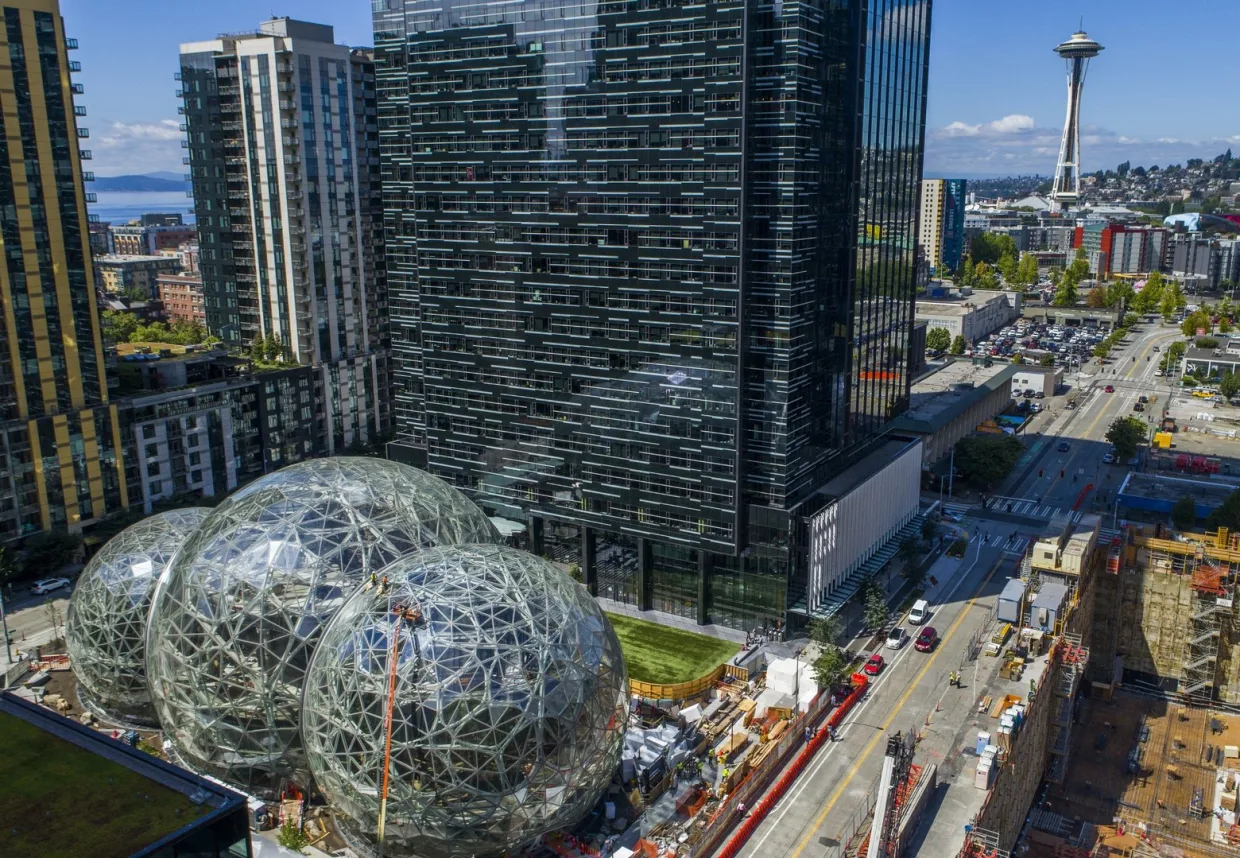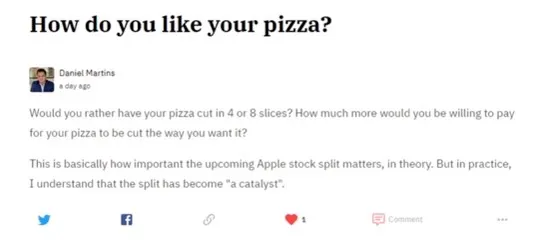Valued at over $3,000 apiece, Amazon could benefit from a stock split, following in the footsteps of Apple, Tesla and NVIDIA. The Amazon Maven explains why.
NVIDIA Corporation (NVDA) has been the most recent large tech player to announce a stock split: one share of the semiconductor company’s equity becomes four on July 19. Since the news broke, NVDA shares have rallied 14% in less than two weeks.
On the back of another stock split in the tech world, investors might be wondering: valued at well over $3,000 apiece, when will Amazon stock (AMZN) finally undergo its own? And if a split happens, could the event serve as a catalyst that sends shares of the e-commerce giant above previous highs?

Understanding a stock split
First, it helps to understand what a split is. Officially a “stock dividend”, splits serve to divide a company’s equity into more numerous (but smaller) “chunks of ownership”. In August 2020,I used the pizza analogy to explain how stock splits work, see box below.
When Apple (AAPL) announced its 2020 stock split, CEO Tim Cook explained that the idea was to “make the stock more accessible to a broader base of investors”. But since brokerage firms now offer fractional share trading, a split serves primarily as an investor sentiment boost.

Amazon’s split history
Amazon is no stranger to stock splits, but the last one has not happened in a while. Below is the short list of previous AMZN splits; the split ratios; and how share price behaved immediately following each event:
- June 1998, 2-for-1: only about one year after Amazon became a public company, its stock was split for the first time. From the original IPO price of $18, AMZN had climbed to $87 as of the event date. Within only one month of the split, Amazon stock had gaineda whopping 84%.
- January 1999, 3-for-1: barely half a year went by since the first split, and Amazon shares were parted in three. One month after this second event, Amazon stock haddeclined 7%. However, much of the upside in share price may have already been captured since the IPO: a 30-fold increase in less than two years, fueled in great part by the historic dot-com rally.
- September 1999, 2-for-1: during the late stages of the internet bubble, Amazon executed its last stock split. One month after it, Amazon stock had climbedanother 31%. The bursting of the bubble, starting in March 2000, put an end to Amazon’s share split run.
The Amazon Maven’s views
Amazon’s stock split history says one thing clearly: Jeff Bezos and company have not been a fan of the strategy, at least not since the post-IPO days that also coincided with market exuberance for tech stocks. But the company could change how it views stock splits, considering the upcoming CEO transition.
I believe that Amazon could benefit from a lower nominal share price for at least two reasons. First, although splits should logically not create equity value (remember the pizza example), it has been effective at boosting shareholder morale and investor sentiment. Consider the following:
- Apple announced a 4-to-1 split on July 30 of last year, to be executed at the end of August. During this one-month period, AAPL shares climbed 34% to $129 – interestingly, reaching a price that is above current levels.
- Tesla (TSLA) executed its first 5-to-1 split in history around the same time: late August 2020. In the three weeks between the announcement and the split execution, TSLA shares surged by a jaw-dropping 80% to about $500.
- NVIDIA seems to be heading in the same direction: a stock split followed by increased bullishness for the shares.
Second, at a lower share price, Amazon stock could qualify for the Dow Jones Industrial Average. Since the index uses a price-weighted approach to allocating the holdings, AMZN at $3,000-plus would not stand a chance at being considered for inclusion. At $300 or $150, the story could be different.
Being in the Dow could boost Amazon stock in a couple of ways: (1) more visibility from individual investors that track the index, and (2) a spike in demand from institutional investors (think Vanguard, BlackRock) who would need to buy AMZN shares in order to mirror the Dow’s holdings.
精彩评论